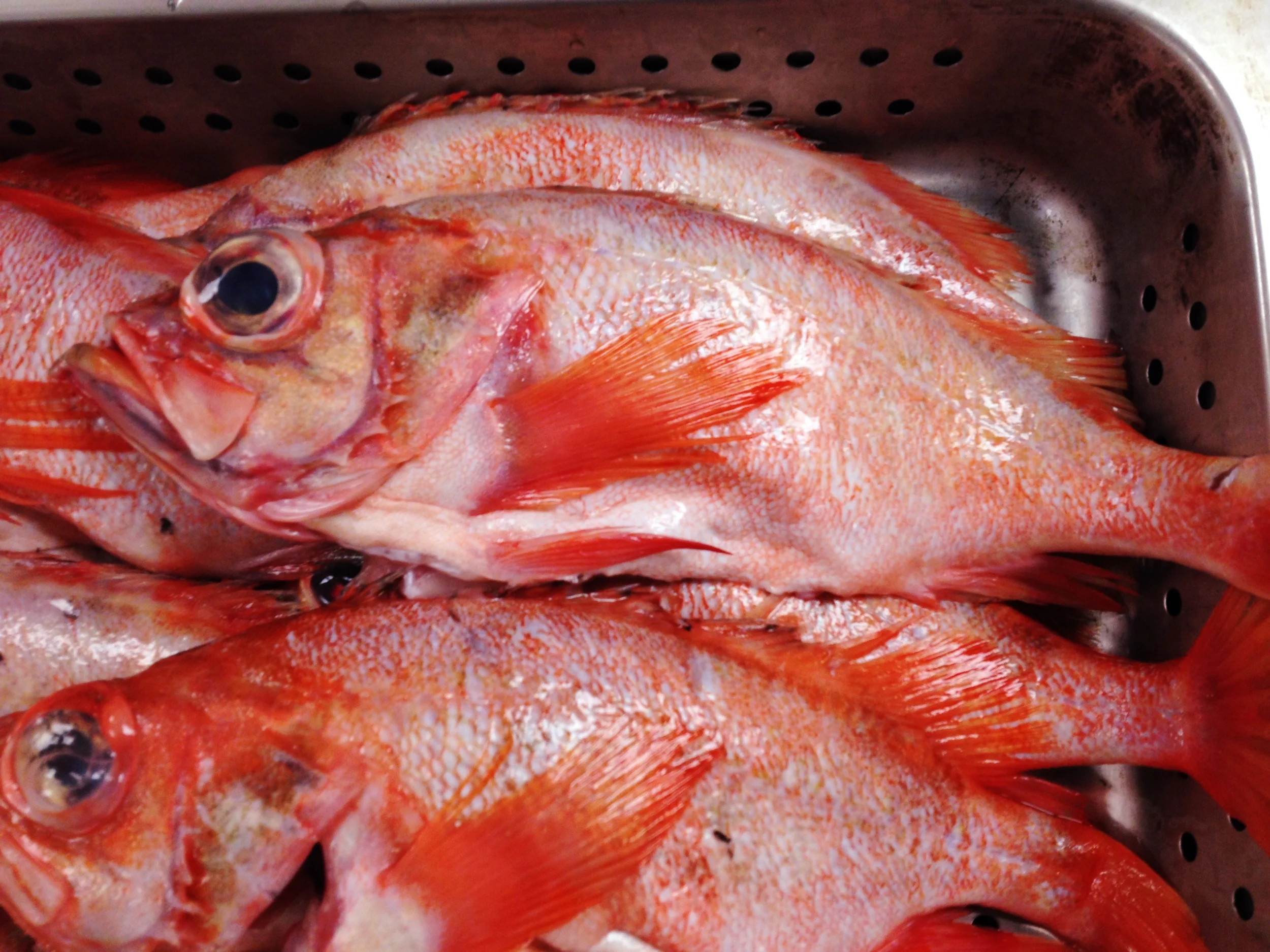ACADIAN REDFISH (Sebastes fasciatus)
Available year round
The Acadian Redfish is commonly caught in the Northern Atlantic. Common market names for this species is "Redfish" and "Ocean Perch". They are one of our favorite local fish because they are an underutilized species that makes amazing fish tacos.
This species was widely fished during WWII-it shipped well overseas and was a key protein source for soldiers. Handling them was difficult.-many processors suffered serious hand injuries from the redfish's sharp dorsal spines.
Redfish fillets can sometimes be found at the market. If you purchase Redfish whole, ask your fishmonger to cut off the spines.
Due to the demand in the 1940s and 1950s, the redfish population took a major hit. Since Redfish are slow growing, reproduce at a late age (5-6 years old) and have low reproductive rates, the fishery took decades to rebuild.
RESTORED FISHERY
Now that their population is considered to be at a healthy density, the Redfish fishery is open. According to NOAA, in 2010, 3.6 million pounds of Redfish were caught with a commercial value of only $1.96 million dollars. Fishermen were projected to only receive about $0.50/lb (called the ex-vessel price). Since Redfish have not fully hooked consumers (YET!), a lot of the Redfish is used for lobster bait.
THEY'RE UNDERUTILIZED
In New England, Redfish can be found in your everyday chain supermarket. Their large eyes and reddish orange body makes them easy to accurately identify. Their thin, soft and flaky white fillet is ideal for broiling with butter, lemon and herbs, adding to soups or blackening for spicy fish tacos. Since New England is trying to make Redfish your family's new favorite fish, their fillets are really affordable at ~$5/lb. Redfish are harvested year round, enjoy!
Fun Fact: The redfish is one of the only fin fish species that participates in internal reproduction rather than spawning.
BLUEFISH (Pomatomus saltatrix)
IN SEASON June through September
While walking past the seafood display case filled with pearly white imported fish, the meat of the bluefish might catch your eye. Bluefish fillets don't look like most fillets-they are light greyish blue to a light brown in color. But don't judge a fish by its color! They're hearty and delish!
THE FISHERY
After reaching an all time low population estimation in 1996, a management plan for bluefish was developed and implemented. Only a specific number of pounds of bluefish are allowed to be commercially landed in MA. In 2015, 343,828 pounds of bluefish was MA quota.
Bluefish have quite a mouth! Their mouth is large and riddled with lots of sharp teeth. They are known to be very aggressive feeders. They form a school with other bluefish and chase schools of smaller fish. During the summer in New England, juvenile bluefish can be spotted in estuaries while the adults are being sought after by commercial and recreational fishermen.
BUYING AND PREPARING BLUEFISH
For a milder tasting bluefish experience, purchase smaller fillets or a smaller fish and remove the dark brown strip (there's lots of oil in it that creates an extra pronounced flavor) which runs through some fillets. Bluefish makes for a great sandwich and is prime for smoking (smoked fish dip anyone?)





